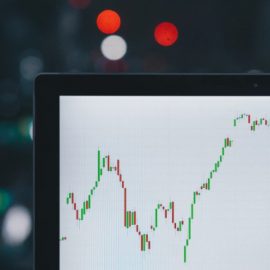

This article is an excerpt from the Shortform book guide to "Onward" by Howard Schultz. Shortform has the world's best summaries and analyses of books you should be reading.
Like this article? Sign up for a free trial here.
What’s Onward by Howard Schultz about? How did Schultz turn Starbucks around during the 2007-2008 financial crisis?
In Onward, Howard Schultz highlights the obstacles he faced as the CEO of Starbucks at a time of worldwide instability. He further explains how he managed to save the company while preserving its unique value.
Read below for a brief overview of Onward.
Overview of Onward
During the 2007-2008 financial crisis, many previously ultra-successful companies struggled to turn a profit and remain in business. Titan of the coffee industry Starbucks was no exception. Sensing that the company was headed toward doom, its first CEO returned to the corporation’s helm in January 2008 to correct its course. In Onward, Howard Schultz describes the challenges he faced as returning CEO during a time of global instability. He also explains how he helped Starbucks overcome its financial woes without sacrificing the characteristics that make it special.
The Rise and Fall of Starbucks
By 2007, Starbucks had become a bastion of coffeehouse culture, but it wasn’t performing as well as Schultz thought it should. In this section, we’ll discuss how Schultz helped Starbucks rise to the top of the global coffeehouse industry as its first CEO before stepping down to let two successors hold the reins. Then, we’ll explore the challenges Schultz identified as leading Starbucks toward its downfall.
Starbucks’ Rise to the Top
Schultz explains that his relationship with Starbucks began in 1982 when he joined the company as a marketing professional. At the time Starbucks was small and local to Seattle, Washington. As part of a work assignment, Schultz traveled to Italy, where he was inspired by the pleasurable cafe experiences he had there to start his own coffeehouse company. In 1987, his company acquired Starbucks and chose to keep the Starbucks name, at which point Schultz became Starbucks’ first CEO.
From the beginning, Schultz’s vision for the company was to balance making profits with uplifting humanity. Schultz stepped down to become Starbucks’ chairman of the board and chief global strategist in 2000, but his successor, Orin Smith, carried this vision forward. Schultz explains that over the years, Starbucks provided unique value for customers, employees, suppliers, stockholders, and global society and the environment:
Starbucks provided value to customers by offering a distinct coffeehouse experience that fused artisanal coffee, meaningful employee-customer relationships (achieved by having employees face customers as they made their drinks), and a comfortable “third place” setting (a space outside of home and work where people could gather).
Starbucks provided value to employees by endowing them with a healthy, rewarding work environment and uncommonly good benefits (for example, even part-time employees were entitled to health insurance and stock options).
Starbucks provided value to suppliers by treating them ethically (for example, ensuring coffee farmers were paid more fairly by participating in the Fairtrade certification system).
Starbucks provided value to stockholders by growing the business and expanding globally (Starbucks’ value nearly tripled between 2000 and 2005).
Starbucks provided value to global society and the environment by contributing to humanitarian causes and environmental education campaigns.
Starbucks’ Fall From Grace
Although Schultz commends Smith’s leadership, he also says that Smith’s focus on expansion by opening new stores domestically and abroad was bad for business. Many of the new locations didn’t operate sustainably, and the cost of opening them overshadowed the profits they brought in. However, opening new stores helped Starbucks appear to be growing, so the next CEO, Jim Donald, continued that strategy. Donald also led Starbucks’ breakthrough into the entertainment industry by developing partnerships with creators and promoting or co-producing their work.
Schultz says he began having doubts about Donald’s leadership because he started hearing more customer complaints. Starbucks was also suffering financially—growth slowed to a snail’s pace and stocks dropped tremendously—a decline that was worsened by the 2007 economic downturn. Schultz didn’t blame Donald because he felt all of Starbucks’ leaders shared responsibility for its performance, but he generally disagreed with the company’s direction. In his view, Starbucks’ leaders were failing the company by prioritizing rapid growth over in-store performance, which diminished the distinct coffeehouse experience that made Starbucks valuable to its customers and damaged in-store employee morale.
Schultz’s Plan to Shake Starbucks Up
Once he understood the grave position Starbucks was in, Schultz stepped in as CEO for the second time to steer the company in a better direction. In this section, we’ll discuss Schultz’s motivation for reprising his role as CEO and the leadership strategies he used to restore stakeholders’ trust in Starbucks.
How Schultz Reprised His Role as CEO
When Schultz realized Starbucks was struggling, he wrote an email to company leaders explaining that he felt the decisions they’d made to increase profits had come at the expense of the company’s formerly outstanding customer experience. Someone leaked the email to the media, which resulted in intense scrutiny of Starbucks’ performance and culture. The email was also controversial internally, as Starbucks executives disagreed about how to handle the problem Schultz highlighted. However, Schultz says leadership eventually agreed with him.
Six months later, Schultz didn’t think the necessary changes were being made, so he talked to the board about taking charge as CEO. The board agreed, and he began making preparations to do so.
Strategic Leadership Helped Schultz Restore Trust in Starbucks
Schultz planned his return meticulously because he knew that every detail of the transition would impact stakeholders’ trust in the company (and in his ability to correct its course). In his first few months as CEO, he used two strategies to project a reassuring image to both internal and external stakeholders: strong communication and timely action.
How Schultz Revitalized Starbucks
As CEO, Schultz made a multitude of decisions that helped Starbucks survive the financial crisis. In this section, we’ll focus on the three turnaround strategies mentioned earlier: overhauling Starbucks’ management, improving its financial standing, and enhancing the coffeehouse experience. We’ll also discuss how these decisions culminated in Starbucks’ improved standing by the end of 2009
How Schultz Overhauled Starbucks’ Management
One of Schultz’s initial turnaround strategies was to completely overhaul the company’s management. In this section, we’ll dive into the three major changes Schultz made to accomplish this strategy: hiring new executives, securing emotional buy-in from executives and managers, and reaffirming key values in Starbucks’ management strategy.
How Schultz Improved Starbucks’ Financial Standing
Schultz’s second initial turnaround strategy was to improve Starbucks’ financial standing. He achieved this by focusing on two objectives: frugalizing operations and shifting in focus from expansion to innovation. Let’s explore these changes in more detail.
Frugalizing Operations
Schultz explains that by the second quarter of 2008, Starbucks was in dire straits as it experienced a historic low in sales earnings. Starbucks needed to cut costs immediately, so he asked a new executive to evaluate the performance of US stores. This executive decided to close 600 underperforming US locations, many of which had been opened haphazardly (without adequate consideration of revenue potentials) in the last three years. Starbucks also laid off 550 corporate employees to cut costs. Schultz explains that in both cases, the company endeavored to smoothly transition as many employees as possible to other roles; if that wasn’t possible, the employees received professional assistance or generous severance packages.
By the end of 2008, profits were still down and there was no sign of economic recovery, so Starbucks’ board asked Schultz to make further cuts. Internal research showed that Starbucks was hemorrhaging money due to in-store inefficiencies, like too much food waste and wasteful labor scheduling procedures, as well as inefficient supply chain operations. In response, Schultz and his executive team made $400 million in cuts. They didn’t want to take such an aggressive approach but did so at the board’s behest. Schultz explains that this turned out to be a good call because it reassured analysts at Starbucks’ next analyst meeting, which had a slightly positive impact on Starbucks’ stock value (though it still loomed near its all-time low).
Shifting in Focus From Expansion to Innovation
Schultz says that the decision to close hundreds of locations underscored the problem with Starbucks’ growth strategy: Expanding the company’s geographic reach was not always good for business. This meant he needed to nurture a more effective strategy to reach new customers: innovation. Starbucks created three new products: a slushie-like drink called Sorbetto, a smoothie called Vivanno, and an instant coffee called Via. Schultz expected Sorbetto to revitalize sales and solve Starbucks’ problems, but its high production costs and sugar content led to its failure. Vivanno was slightly more successful because it was healthier, but it launched at the same time as Sorbetto and didn’t get the marketing attention it deserved.
Schultz explains that the instant coffee Via, developed for sale in grocery stores, was harder to roll out than Sorbetto and Vivanno. This was partially because he received pushback from other executives who feared that selling an instant coffee would degrade their brand (since instant coffee is notoriously inferior to brewed coffee and Starbucks prides itself on quality). But Schultz’s data told him that instant coffee could be immensely profitable and help Starbucks reach new customers without sacrificing quality, so he persisted. Schultz explains that Via was immensely successful in three ways: Critics liked it and it sold well immediately, it revitalized the company’s entrepreneurial spirit, and it proved innovation was a wise growth strategy.
How Schultz Enhanced Starbucks’ Coffeehouse Experience
Schultz’s third turnaround strategy was to enhance Starbucks’ coffeehouse experience. To accomplish this, Schultz made changes in four key areas: he strengthened menu offerings, improved customer service, polished store design and operations, and renewed social and environmental commitments. Let’s explore each of those areas now.
Strengthened Menu Offerings
Schultz says he experienced pressure from investors and other financial experts to cut corners on coffee quality to cope with the financial crisis, but he was unwilling to make that concession because high-quality coffee is the most fundamental basis of Starbucks operations, which sets it apart from other coffeehouse companies. However, in 2007, Starbucks coffee was receiving poor ratings, with one important organization ranking it behind McDonald’s coffee. Schultz says this occurred for two reasons: Americans were unaccustomed to such flavorful coffee, and the type of coffee brewed in each store changed daily, which made customers feel that the quality of Starbucks coffee was inconsistent.
To address this issue, Schultz greenlit the development of a new coffee blend that would be more palatable to the average consumer and be served daily at every Starbucks location—Pike Place Roast. He also renewed an old tradition: Employees would start grinding the beans in stores, instead of having coffee grounds shipped to the stores (a decision that had been made to speed up in-store operations and therefore maximize profits). This would improve the coffee’s taste by preserving its freshness for as long as possible. The launch of Pike Place Roast was successful, and it became a top-selling coffee within three months of its initial release.
Schultz also initially discontinued Starbucks’ warm breakfast sandwiches due to their smell, which overpowered the scent of coffee that was so integral to Starbucks’ coffeehouse experience. But the sandwiches were best-sellers, so he re-introduced a less pungent version of them, resulting in improved sales.
Improved Customer Service
Schultz explains that when the email he wrote to executives detailing Starbucks’ problems was leaked in 2007, it alerted him to another concern: Starbucks was behind the times. The email exploded on social media, but Starbucks had no way to participate in that conversation because it had no social media presence at the time. To open up communication with customers, Schultz directed the company to take two initiatives: Joining social media and creating a website called My Starbucks Idea, where customers could submit their ideas to make Starbucks better and vote on which ideas they liked best.
The My Starbucks Idea submissions told Schultz that customers, who were also experiencing the effects of the financial crisis, wanted more bang for their buck when it came to their Starbucks purchases. Starbucks had faced similar criticisms from the media, which cast Starbucks as a symbol of millennial extravagance that was inappropriate for the times. To address these issues, Starbucks rolled out customer rewards programs that gave customers access to free items and discounts, which helped incentivize in-store spending despite the struggling economy.
Polished Store Design and Operations
Schultz explains that in addition to its lack of a social media presence, Starbucks was behind in other ways. For one thing, it was using outdated technology that was clunky and cumbersome, which slowed down customer service and impeded employees from forming relationships with customers. To address this issue, Schultz gave each store a new laptop and acquired two new machines: the semiautomatic Clover, which created flavorful cups of brewed coffee and could be used to expand Starbucks’ repertoire of customizable brewed coffee drinks, and the semiautomatic Mastrena, which created espresso drinks and was sized so that employees could more easily interact with customers while making their drinks.
Schultz was also displeased with the design of Starbucks stores because they didn’t create the warm atmosphere needed for a successful third place. To fix this, Schultz rehired a former head of store development whom he considered a true innovator to redesign Starbucks stores. The new designs were centered around sustainability and featured eco-friendly elements like energy-efficient lighting and salvaged wood. Schultz also opened two experimental coffee shops that were as different as possible from the Starbucks brand in every way (including store names, menus, operating procedures, and designs). This enabled Starbucks to experiment with potential future directions safely, without making major changes to Starbucks’ brand.
Additionally, Schultz decided to experiment with a new management technique he calls the “Lean program.” The Lean program involved asking employees to take the initiative to solve problems they observed in their stores, rather than only acting on top-down operating instructions from Starbucks’ corporate headquarters. This management method was tested in a few stores, where it resulted in significant improvements in both customer and employee satisfaction. Some changes that employees made to their local stores as part of this program were even scaled nationwide—for example, Starbucks changed its guidelines for how often to brew new coffee based on one store’s experimentation with this process.
Renewed Social and Environmental Commitments
Schultz explains that one reason customers had been drawn to Starbucks throughout its history was its commitment to social and environmental responsibility. To stay relevant concerning these issues, Schultz renewed Starbucks’ commitments to Conservation International (a nonprofit dedicated to fighting climate change) and Fairtrade (which encourages ethical supply chain practices).
Starbucks also took on two social initiatives. First, the company leveraged its new social media presence to promote an advertising campaign offering free coffee for anyone who voted in the 2008 presidential election, in which only half of eligible voters were predicted to participate. (Due to voting laws, Starbucks had to change their plan and give free coffee to anyone who asked on election day, not just voters.) As a result, more than twice the usual number of customers entered Starbucks stores that day.
Second, Starbucks partnered with Heifer International, a nonprofit that alleviates poverty by distributing livestock to subsistence farmers worldwide. This partnership began when Schultz visited coffee farmers in Rwanda, learned how important livestock are in the lives of people living below the poverty line, and was inspired to involve his company in making a difference.
The Outcome of Schultz’s Leadership
Ultimately, Schultz’s comprehensive approach to revitalization not only stemmed Starbucks’ financial downturn but also bolstered its reputation as a socially responsible corporation. By realigning Starbucks with its founding values and adapting to contemporary challenges, Schultz ensured that the company was positioned for sustainable success. In quarters 3 and 4 of 2009, Starbucks boasted improved ratings, increased sales, and higher stock values.
As a result of these positive trends, Schultz made two announcements in 2010: First, he’d raise employees’ pay and restore benefits that had been cut to save costs. Schultz explains that Starbucks thrives partially because it outperforms its competitors concerning employee satisfaction, so it was strategic to reward his employees.
Second, he’d refocus from financial recovery to purposeful international expansion with a focus on China because its market was friendliest to Starbucks due to cultural and economic factors, including a growing need for third spaces. In pursuing global expansion, he’d carry forth the lessons he learned during the recession, including the importance of innovation and cost efficiency, to ensure future success.

———End of Preview———
Like what you just read? Read the rest of the world's best book summary and analysis of Howard Schultz's "Onward" at Shortform.
Here's what you'll find in our full Onward summary:
- Why Starbucks CEO Howard Schultz left and later returned to the company
- Schultz’s three-part strategy that saved Starbucks from potential ruin
- Why millions of people love Starbucks’ coffeehouse experience






